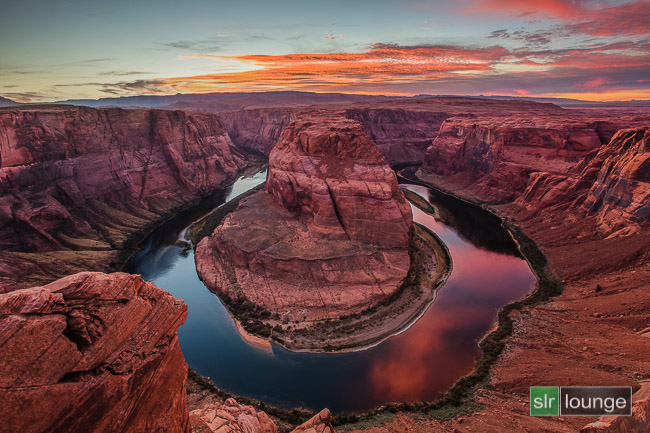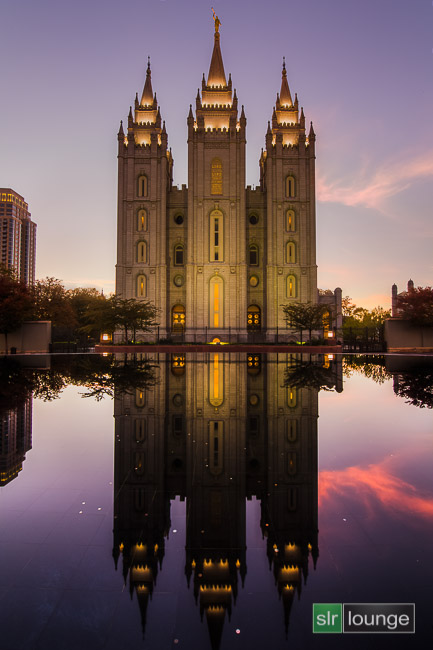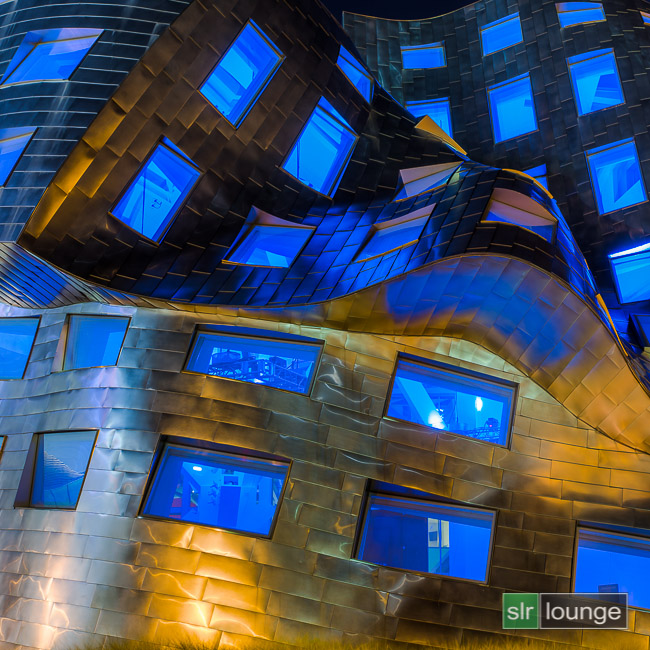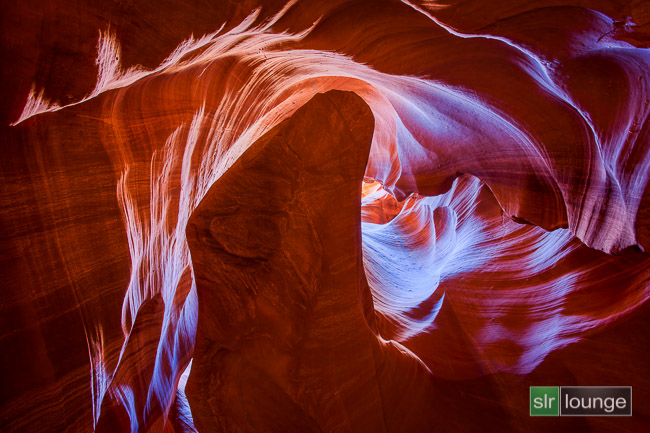If you own a DSLR camera, the odds are that you've tried to create an HDR image using one of the many available HDR software programs available on the market, and you might have even created what people call 'disastrous' results. But fret not, because SLR Lounge recently released the end-all, be-all HDR tutorial to conquer all other HDR tutorials. In this behemoth of a video series, Pye Jirsa (also known as Post Production Pye) of SLR Lounge walks us through 25 (!) scenes and how he shot them.
Now, let me preface this review by saying that many people are going to have preconceived thoughts in their head that are something like this: "I would never use HDR, I don't need HDR to improve my photos, and it is a useless tool, therefore I have no interest in purchasing or watching this series." And to some degree, I felt that way as well before watching this.
But after viewing just ONE chapter in this series, I was convinced otherwise. Pye uses HDR not as a final result, but as just one small piece in the ever-incomplete puzzle that is creating a compelling image. By combining HDR with single exposures, a plethora of Photoshop techniques, plugins, tonal shifts and adjustments in Lightroom, and good 'ol ingenuity, Pye has been able to create some truly stunning images that look absolutely nothing like the HDR that you and I, and everyone, has been loving to hate for years.
At the end of this review, I wrote this:
"While you might think that HDR is as simple as loading three bracketed images into Photomatix and playing with some sliders, you could not be more wrong. Comparing Pye's finished images to the images that come out of Photomatix without any processing, the difference is without question simply incredible. This DVD will take your landscape and/or HDR photography to the next level. In fact, it will just plain and simply take your photography to the next level. "
I'm doing the product a disservice by making you read all of my ramblings to find that tidbit, so I'm going to copy and paste it right to the front of the article. If you're thinking 'I don't want to read this enormous review' then just read the above quoted paragraph and leave it at that. For those of you who want the nitty-gritty, read on.
So let's jump in and take a look at this enormous offering in SLR Lounge's Mastering HDR Photography workshop.
Getting Started
After downloading the epic 15 gigabyte file set from SLR Lounge, you're prompted to unpack them in a specific way (more on that later) in order to allow the tutorial to be viewed from a web browser. This was actually very cool: I enjoyed being able to flip between the tutorial tab, Facebook, and my midget po- …I mean my Google account instead of having to flip between a clunky video application. It was just like watching Netflix: except, to be honest, Pye's implementation and user interface is about twenty times better than that of Netflix or Hulu or whatever your favorite streaming site is. It's easy to flip between chapters (there may be hundreds) or stop and rewind to a specific point to further flesh out an idea or get a better grasp on it. All in all, I ended up really liking this browser-based navigation instead of having to guess-click around a 2 hour MP4 file trying to find my place again.

The Basics
Whether you consider yourself an HDR connoisseur or someone who has never even enabled their camera's bracketing function, you'll want to pay attention to, or at the very least skim through, the first few chapters, as it provides all the background information necessary to get started with Pye's method of HDR photography. Besides the usual tripod and remote release, there are a few other accessories that will come in handy, and Pye also mentions that you'll need a program such as Aperture or Lightroom and something similar to Photomatix to get the most out of the tutorial. While there are alternatives and it is simple enough to translate between programs, Pye does the vast majority of his editing in Lightroom and Photomatix. Of course, you'll also need access to Photoshop as that provides the integral ability to manipulate your HDRs in ways that Lightroom and Photmatix simply can't, and the use of Photoshop is really what sets Pye's HDRs and this tutorial apart from the rest. Do note that it doesn't really matter what program you use, as the techniques are really the most important thing taught in the video. Even though he teaches it with Lightroom, you can just as easily apply the same techniques to Aperture or whatever raw processor you prefer. Pye is teaching you the techniques, not the program, and just like cooking, you can see Gordon Ramsay do something in his kitchen on a $500 Calphalon pan and then use his techniques to do the same thing on your (my, at least) $50 Target pan.
After explaining some of the basics, Pye goes into some of the more complicated details involved with creating beautiful HDR images. Optimal settings, dealing with ghosting, using mirror lockup, using raw images vs JPG images, etc. While some of this is basic stuff, there is a lot to be learned here, and we're taken deep into Pye's well of knowledge: I'd consider myself someone who has a very firm grasp on some of this technical stuff, and I found myself learning plenty of things here. And make no mistake when I say that this is in-depth: every single minute aspect is covered. If you've ever had any technical questions about HDR, they will be answered. This tutorial is sickeningly detailed and really makes an effort to leave no stone unturned.


The Serious Stuff
After a couple chapters of going over all of the things you need to know to actually create an HDR image, Pye takes us right into the step-by-step processes that he uses to make a professional quality HDR image. Like I said previously, these aren't your simple run-of-the-mill HDR images that we've all grown accustomed to seeing. Each chapter uses the same formula: First we're introduced to the scene that we're going to shoot and process. Pye walks us through how he shot it and why, making special allowances for the unique situation that each location presents. After we shoot it, we're taken back to Pye's studio and he walks us through the processing for each image. We prepare the raw images, process them with Lightroom and Photomatix, process them again in Lightroom, then open them in Photoshop, where we apply tweaks both small and large (yet always essential) to the image. From there, it's back to Lightroom to apply final tweaks and put the final polish on.
We're shown a variety of situations: from backlit landscapes to dark city scenes and bright daylight situations. In addition, we're taught how to create panoramic HDRs, single shot HDRs, and handheld HDRs. There are also a few bonus chapters in there which detail special situations that you won't encounter every day.


If you're still not convinced that this is in-depth enough, Pye has supplied the original raw files and Lightroom data so you can follow along and do exactly as Pye does (if you're a learn-by-doing type) or add your own tweaks to see how your own taste stacks up to the master's.
Being the huge architecture dork that I am, my favorite shots of his were of the Lou Ruvo brain research center in Las Vegas, CityCenter in Las Vegas, and the Mormon Temple in Salt Lake City. I was absolutely blown away by the quality of the images that Pye was creating and the amount of knowledge he was willing to share.




If you're a landscape buff, you won't be disappointed in the slightest, however. Pye travels all over the Southwest and photographs some iconic landscapes and creates some truly stunning results. And the best part is that they don't actually LOOK like HDR images. They just look like incredible images with an amazing tonal range and color palette.
Lastly, I need to reiterate just how in depth this tutorial series is. You will watch Pye process every single photo from the ground up, and he narrates every single move while telling you exactly WHY he's doing it. Everything from cloning out dust (and what a cool method he has devised for this) to applying presets and curves adjustments are covered in incredible detail.
The Verdict
As you know from me rambling on here, this DVD covers everything you absolutely need to know for creating gorgeous HDR images. However, I wouldn't be doing my job if I didn't tell you everything about it, including the bad and the good.



Because there is so much information jammed into this tutorial, it is staggeringly long. It's almost overwhelming at times. I found that rather than trying to watch it all the way through, it was much more effective if I skipped around and attacked individual concepts rather than trying to pull the whole thing off in the style of a Star Wars marathon. When you're up to the 13th chapter and we're being walked through how to remove dust, it does tend to drag a bit, but I suppose this is the price we pay for the absolutely incredible depth that the DVD goes into. This could also be me just being accustomed to an 'I want it now' type of attitude. I've never been the most patient fellow.
My other nitpick was that the initial installation process was sort of a pain in the butt. While I sang the praises of the browser-based player, I had a few issues with installation. You really need to read the instruction manual before you start viewing. Being a stubborn male, this didn't quite fly at first. It's not really that difficult to get it set up, it's more about wanting to be able to download it and be ready to go, when in fact it takes a few minutes and (for me, at least, maybe I'm old and not computer savvy anymore) some trial and error to get it all right. The directions are concise and easy enough to follow, but like I said, I'd prefer a simple 'download and click play' type of setup. Whether or not this is possible with the browser based player, I do not know.
I know I'm starting to sound like a broken record here, but hear me out. If you want to purchase the absolute gold standard HDR tutorial for creating professional-level HDR images that don't look like the stereotypical HDR images that we're all accustomed to seeing, you need to buy this DVD. In fact, I'm willing to bet that you could watch a five minute slice of any part of this DVD and learn something new. It's just that packed with knowledge.


While you might think that HDR is as simple as loading three bracketed images into Photomatix and playing with some sliders, you could not be more wrong. Comparing Pye's finished images to the images that come out of Photomatix without any processing, the difference is without question simply incredible. This DVD will take your landscape and/or HDR photography to the next level. In fact, it will just plain and simply take your photography to the next level.
Despite my nitpicks (which actually have nothing to do with the quality of the video or knowledge shared) I have no problem recommending this for purchase. The $129 price tag isn't steep when you consider just how much you'll learn and how much your images will improve.







Great review. Looks like this can be helpful to any photographer.
Honestly, I think most of these images that are shown as examples still look 'HDR' to me. It's the muddy middle tones that stand out to me. The night shots look good. I think just good ole manual blending using luminosity masks is the better way to go.